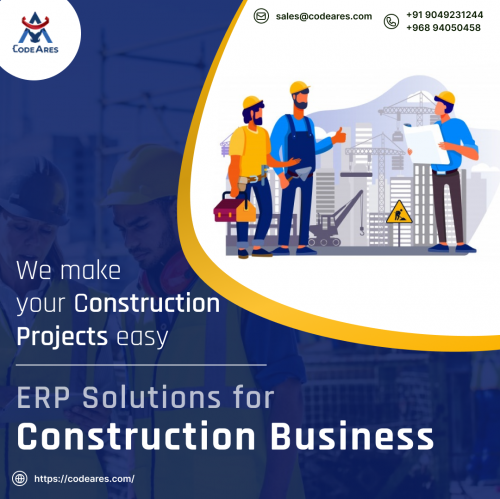Why Continuous Testing Is The Key To Unlocking Your ERP TransformationA Stage Play by Codeares Global IT Solutions
Many business and technology leaders
realize that their digital transformation initiatives can’t be utilized without
modernizing their enterprise resource planning (ERP) software. Incorporating
new technologies such as artificial intelligence and machine learning is
essential to modernizing ERP software development company. Through a 2019 study of ERP
migration and transformation projects, McKinsey revealed that two-thirds of
enterprises did not get the ROI they were looking for from their migration
project. The common reasons for this dissatisfaction are delays in ERP
implementations and misaligned project goals. Intelligent test automation,
which powers a continuous testing approach, will help ERP transformation
projects run on time and stay within budget. Continuous
testing for ERP applications: Why do you need it? Next-gen ERPs and digital operations
platforms require innovative software to be released rapidly, with minimal
business risk. Leading analysts from Gartner, Forrester (paywall) and IDC
(registration required) now recognize that software testing in its current form
cannot handle the challenges posed by ERP applications. These analysts have
concluded that software testing must be aligned with DevOps and AgileOps
practices to handle giant ERP transformation projects. The Agile/DevOps approach is
incomplete, inefficient and ineffective without continuous testing. In ERP
migration projects where platforms are extended to incorporate new features,
functionalities and technologies, continuous testing helps you transparently
validate the performance of critical business processes. This significantly
reduces the risks associated with a new implementation, along with scheduled
software updates. By catching bugs early in the development cycle, continuous
testing ensures minimal time and budget overruns while providing advantages in
risk reduction. What are the
testing challenges of ERP transformations? According to a report by Bloor
(registration required), more than 80% of migration projects ran over budget in
2007. While I have seen that statistic improve over the years, I know migration
projects regularly face issues of running over budget and over time. A 2019 ERP
report from Panorama Consulting Group (registration required) shows that 45% of
respondents had an average budget overrun of 30%. Here are some
specific testing challenges. • Unclear Testing Scope: Determining
what to test remains a major challenge for QA teams. The business risk grows
every time too little testing is done. If you test too much, it wastes the time
and resources of your business users. • Inadequate Test Coverage: There
are many moving parts in any ERP migration project. Functional and
nonfunctional attributes get added, updated or removed with these migrations.
Testing needs to pass various stages, from a unit test to a volume test, and
eventually a mock go-live cutover. • Change Frequency: In a recent
Deloitte CIO survey, almost 45% of respondents reported that managing changes
in an ERP project scope is one of the top frustrations in planning their ERP
journey (pg. 10). • Testing Fatigue: ERP projects are
long and tedious processes. Using a manual testing methodology for ERP
transformations can be inefficient and error-prone. Ask yourself: “Can my
business users give their full effort to testing?” Continuous
testing for ERP applications: How can I make it work? To incorporate continuous testing
for a digital transformation, leaders must utilize automation. Teams should now
focus on next-generation automation platforms that allow them to quickly build
test cases, automate them and build the infrastructure to run them in a
continuous fashion. Let’s review the four pillars of a continuous testing
strategy. • Know your ideal coverage: Here are
some questions to ask yourself: “What’s my current test coverage? Am I testing
all of our critical processes? If something goes seriously wrong, is it because
I didn’t test enough?” If the test cases you are automating
only cover 30% of your core business processes, the automation might not be
good enough. Emphasize knowing your ideal coverage and leverage a process
mining technology to validate your ideal coverage. Test mining techniques
surface your existing test cases, business processes and configurations from
your system process log to determine your existing testing baseline. • Apply continuous test development:
Test assets require considerable reworks to keep pace with the frequent ERP
changes typical in an accelerated release cycle. This speed cannot be achieved
with continuous testing. • Monitor changes continually: Ask
yourself: “What has changed in the most recent ERP quarterly update? What
business processes or test cases are going to be impacted?” Emphasize the importance of knowing
whether you are testing what is needed. Before the updates are pushed to
production, use automation tools that give better change visibility to users by
alerting them of processes that will be impacted. • Test execution at scale: Prepare a
scalable infrastructure to run thousands of tests on-demand with every change.
Opt for a platform that can run your tests continuously on-premises, in the
cloud and on mobile seamlessly. © 2022 Codeares Global IT SolutionsAuthor's Note
Reviews
|
StatsAuthorCodeares Global IT Solutionsmuscat, Sulthanate oman, OmanAboutCode Ares IT solutions and services conveys innovative and creative solutions, permitting our clients to embrace the advancements that upgrades their organizations future development. From client comm.. more..Writing |


 Flag Writing
Flag Writing